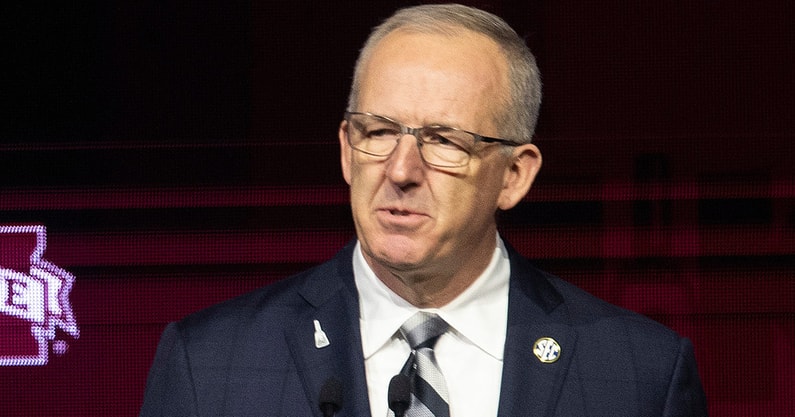Greg Sankey breaks down what can be done to add 'guardrails' to current landscape

Ever since name, image and likeness rules were changed for college athletes a few years ago, various states across the country have handled the situation completely different from a legal perspective. As SEC commissioner Greg Sankey will tell you, there’s no national standard on the issue, which has left each state to make their own regulations and each school to choose to follow those rules or bulldoze right through them.
In a sit-down interview with college football analyst Joel Klatt, Sankey discussed extencisvely the widespread inconsistencies and complete lack of organization or control anybody has over the NIL deals because the states have taken matters into their own hands. Although, some programs are simply ignoring those rules altogether while others are a little more scared, which again, is splintering the whole ordeal.
So take a long read of Greg Sankey’s detailed explanation of why there needs to be a national standard of some kind on the NIL issue as it relates to collegiate sports:
Sankey: NIL needs a ‘national standard’
“Let’s go back to the earlier question about just the onset of Name, Image and Likeness. We said as a league in 2018-2019, the worst way to do this is state by state. We don’t, you know, start a railroad in New York and when it gets to Pennsylvania heading south we have to unload all the cargo, put it on a different railroad because the tracks are a different size. And we are talking about a national endeavor. This is not state-by-state, it’s not a high school association.
“This is national championships at the highest level of collegiate sport, and that needs to be a national standard. And we’ve had that, whether you liked it or not, for years, and that’s been degraded. The biggest factor in that degradation has been different state laws, 30-something now. In fact, states that adopted effective laws or healthy laws backed off when they saw other states didn’t have any laws and their universities were at a competitive disadvantage. Even in states where there were effective laws. I know of no enforcement of those laws at the same level.
Top 10
- 1New
Donald Trump blasts NFL
Teams for not drafting Sheduer Sanders
- 2
Jaden Rashada
Makes transfer commitment
- 3
Kim Mulkey
Takes victory lap on South Carolina
- 4Hot
2nd Round NFL Mock Draft
QBs under microscope
- 5
Shedeur Sanders reacts
To going undrafted in 1st round
Get the On3 Top 10 to your inbox every morning
By clicking "Subscribe to Newsletter", I agree to On3's Privacy Notice, Terms, and use of my personal information described therein.
“So that’s the worst way to set up the national NIL standard. So the pivot is, well, federal legislation could accomplish that baseline standard. There obviously are court cases where there could be outcomes that establish either a very open standard or some description. And some of this has been validated in other court cases, where we can we can maintain a national standard or even conference standards.
“Those are realities, when you do look at history some of the big changes have been compelled externally through government action, the states, and to a certain extent congress, Title IX, or the courts — be it television broadcast changes in the 80s or some of the recent court cases around student athletes and the support that flows to them now.”
By noting those other successful national standards that were set in Title IX and broadcasting, Sankey suggests a standard on NIL would do similar wonders for getting each school on the same page.